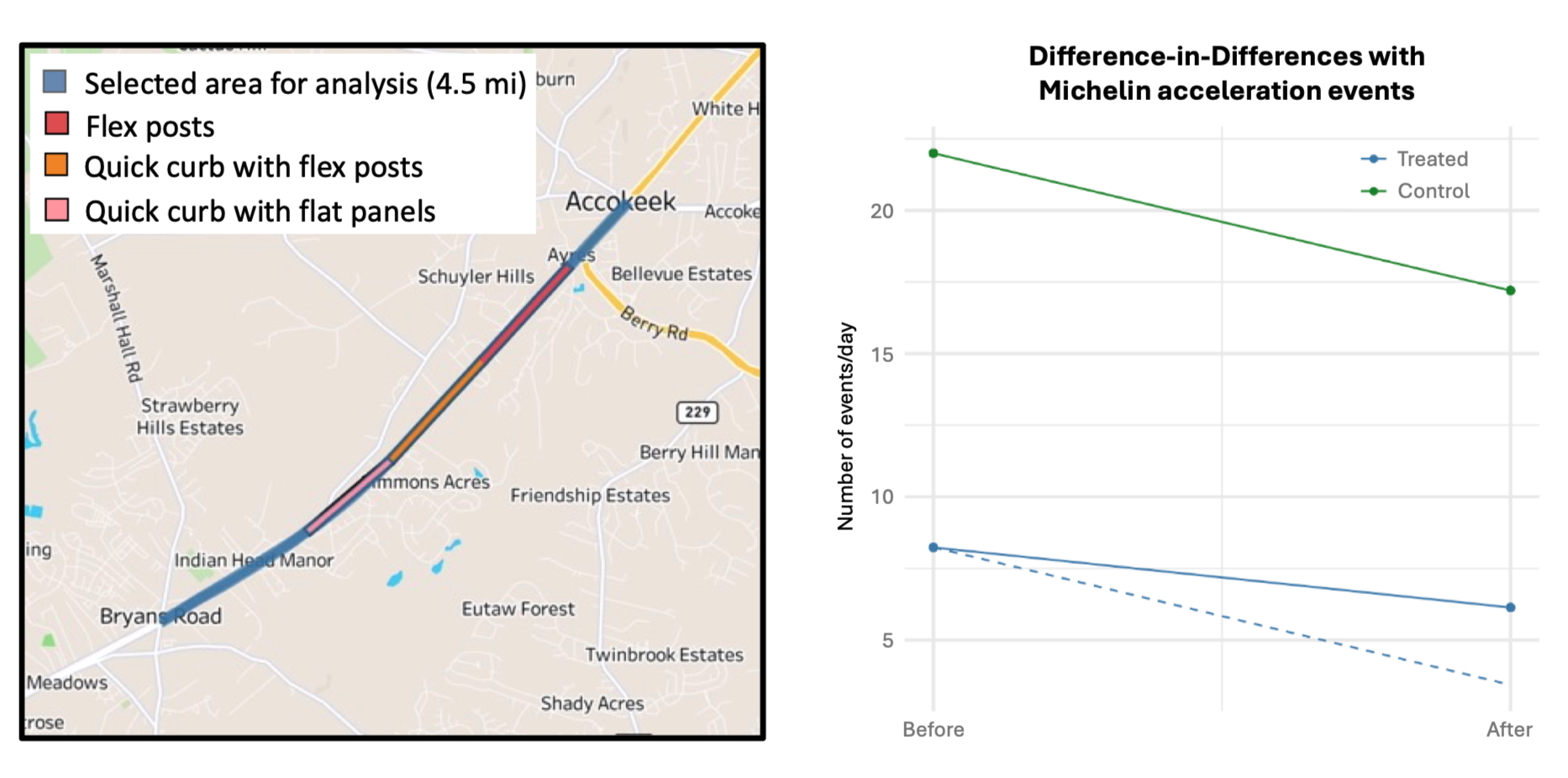MD 210 Before and After Case Study for Speed Management Practices

In Maryland, MD 210 in Prince George’s County is known as one of the most dangerous roads in the state, with the number of crashes rising each year. In 2023, over 400 crashes were reported, marking a more than 14% increase from the previous year. While several countermeasures have been installed in recent years, MD 210 continues to experience a serious safety performance issue.
A Nontraditional Approach
To address the persistent safety concerns with limited resources for countermeasure installation, the Maryland Department of Transportation (MDOT) safety engineers began to explore non-traditional speeding countermeasures including narrowing of lanes from 12 feet to 11 feet and the installation of quick-curbs with flex-posts and panels on both shoulders. Recognizing that unsafe driving behaviors extend beyond speeding, the CATT Lab team took a comprehensive approach, leveraging both traditional and non-traditional traffic safety data to analyze contributing factors and assess the effectiveness of engineering solutions. Non-traditional traffic safety data included real-world observations of harsh acceleration and deceleration events on roadway segments.
Findings
The study developed a rigorous analysis framework that included the use of Gower distance for control site selection, and the application of interrupted time series (ITS) and difference-in-differences (DiD) models to evaluate the change in key safety performance measures. Though the study found that the installed countermeasures did not significantly impact the safety performance of MD 210, a rigorous before-after safety analysis framework was established to overcome the biases in control site selection and naive before-after analysis methodologies.

